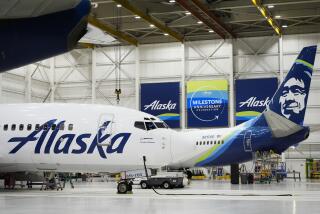Aviation’s latest mystery: What brought down Germanwings 9525?
Just over a year after Malaysia Airlines Flight 370 disappeared over the Indian Ocean without making a distress call, the aviation world faced a new mystery Tuesday: the crash of a Germanwings jetliner in the French Alps with 150 passengers and crew members aboard.
But European investigators should have a far easier time unraveling the Germanwings mystery, after quickly finding the wreckage and recovering the recorders from the Airbus A320. Aviation experts say it is far too early to make an informed speculation about what could have caused the crash, because an extensive list of possible human and mechanical problems could explain the accident.
Officials believe all on board were killed when the plane crashed on its way from Barcelona, Spain, to Duesseldorf, Germany.
Germanwings is a discount carrier owned by German carrier Lufthansa. The parent company’s vice president, Heike Birlenbach, told reporters in Barcelona that Lufthansa “is working on the assumption the crash was an accident.”
The pilot of the Germanwings jet was a German with years of experience, who almost certainly would have engaged the aircraft’s autopilot shortly after takeoff.
A spokesman for the French Civil Aviation authority said the jetliner never sent out a distress signal and ground stations lost radio contact at 10:30 a.m. Tuesday. The loss of contact, coupled with the unplanned descent, prompted a control center to declare a distress.
The potential causes of such a scenario might include:
--The crew became incapacitated by smoke in the cockpit after a fire disabled the autopilot and other systems.
--An electrical malfunction disabled the autopilot system, along with the radio communications system.
--The flight crew may have acted irrationally or been coerced by terrorists.
--A limited structural failure could have turned the jetliner into a glider while shutting down all of the craft’s electrical and mechanical systems.
--The crew might have improperly set the autopilot.
But each of those explanations could have very large holes or inconsistencies that would have to be explained.
The Airbus A320, like all modern jets, has multiple radio and communications systems. Aircraft have sophisticated electrical systems that are capable of isolating failures so that backup systems are not affected. The jetliner transmits telemetry data that could have alerted the airline’s maintenance base of a problem.
The flight reached normal cruising altitude of 38,000 feet about 44 minutes into the flight, according to European authorities. But then it began an unplanned descent over the next eight minutes, losing about 4,000 feet per minute until it crashed into the remote mountains in the south of France.
In March 2014, the Malaysian Airlines Boeing 777 disappeared with 227 people on board, triggering one of the most intensive searches for jetliner wreckage in history. A number of early sightings of debris raised hope that the crash location had been found, but each of the reports was later debunked.
The June 2009 crash of an Air France A330, flying from Brazil to France in a storm, triggered another massive search. Some wreckage was located floating in the Atlantic. After extensive searching of the ocean floor, the flight recorders were located. European authorities determined that the crash, which killed 228 people, resulted from the flight crew not reacting quickly to the loss of air speed data from a failure of the craft’s pitot tube and allowing the craft to enter a sustained stall.
More to Read
Start your day right
Sign up for Essential California for news, features and recommendations from the L.A. Times and beyond in your inbox six days a week.
You may occasionally receive promotional content from the Los Angeles Times.







